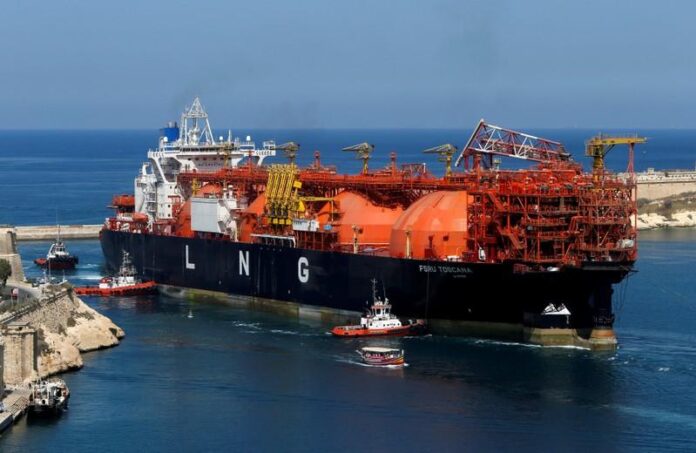ISLAMABAD: The government has been considering leaving Liquefied Natural Gas (LNG) imports to the private sector and planning to auction the underutilised capacity of the two LNG terminals to streamline LNG business in the country, Pakistan Today has learnt.
According to sources, by leaving the LNG import to the private sector and auctioning the unutilised capacity of the two LNG terminals – Engro Elengy Terminal Pakistan Limited (EETPL) and Pakistan Gas Port Consortium (PGPC), LNG consumption in the country would increase significantly in the near future.
They said the Petroleum Division has agreed to the abovementioned proposals, but the permission of the federal cabinet was yet to be taken in this regard.
“Following the merger of Pakistan LNG Limited (PLL) and PLTL, it is up to PLTL now to decide as to how much capacity it will keep with itself and how much LNG terminal capacity it will auction,” sources said.
Meanwhile, sources revealed that two private LNG companies – Energas and Mitsubishi (Tabeer Energy) – have already obtained Letter of Interests (LoIs) to install new terminals at Port Qasim without any government commitment to buy LNG from them.
“As the government is importing 1,200 million cubic feet per day (MMCFD) of LNG and paying heavy capacity payments to the already working LNG terminals, the auction of the unutilised capacity [of the terminals] will help the government earn a heavy amount,” sources said. “Also, the private sector is expected to bring more LNG to the country which will provide a much-needed impetus to the country’s LNG market.”
According to a former PLL official, the two existing terminals were currently operating at 50pc capacity due to issues pertaining to gross mismanagement. He maintained that LNG was the cheapest, cleanest and most easily usable commodity in Pakistan, adding that the lowest prices in the world were procured by PLL under Adnan Gilani.
As per the Oil and Gas Regulatory Authority (OGRA), which regulates the oil and gas sector in Pakistan, the demand-supply of gap during 2017-18 was 1.45bcfd, which was expected to rise to 3.7bcfd in this fiscal. “LNG imports helped reduce the total gas deficit of over 2.5bcfd by 25pc; without gas imports, the gap is forecast to reach 4.6bcfd in 2022-23 and 6.7bcfd in 2027-28.”
OGRA stated that LNG was considerably a more efficient and cheaper fuel with average domestic prices in 2019 being $11.1/mmBtu for RLNG, $12.6/mmBtu for furnace oil, $19.8/mmBtu for liquid petroleum gas, $20.2/mmBtu for high-speed diesel, and $20.4/mmBtu for mogas (petrol).
Sources said there was a consensus among market players that gas imports must be increased so that the requirements of all segments of consumers could be met. “Industrial expansion is the only way to counter rising trade deficit and other macroeconomic challenges.”
In the past, they said, industries were forced to use other expensive energy sources, increasing the cost of production and leaving Pakistan’s products less competitive in the international market. Reportedly, sources added, jobs of four million daily wage-earners in Punjab alone were under threat due to gas shortages which affect industrial productivity.
It is pertinent to mention that despite all imports, natural gas supply gap in the country stands at around 2bcfd, resulting in increased gas holidays for industry and CNG sectors, and unannounced load shedding for domestic consumers.




